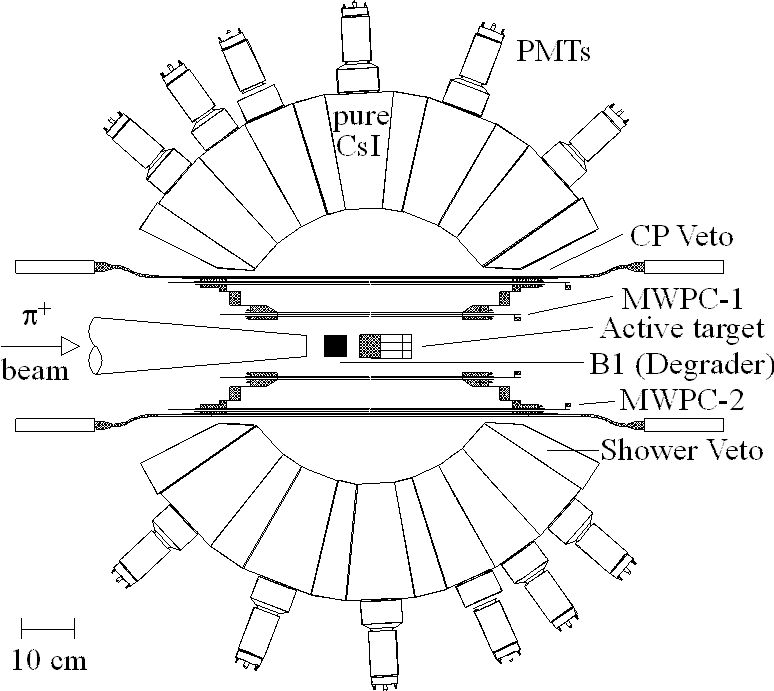






A high acceptance for p b as well as for p +->e+ n e can be achieved by a detector that encloses the reaction centre. A detector exclusively filled with sensitive material is capable to detect a major fraction of all photons from the p 0. The PiBeta detector consists of several parts which are classified into beam counters, electromagnetic calorimeter, charged particle tracker, background shielding and mechanical support.

In the following sections the experimental apparatus will be introduced in more detail starting with the pion beam, followed by the beam counter and target. Then the tracking part and the electromagnetic calorimeter are treated. After the description of mechanical support and outer shielding, the trigger part and data acquisition will be introduced. Background suppression will be discussed continuously throughout the following sections.





